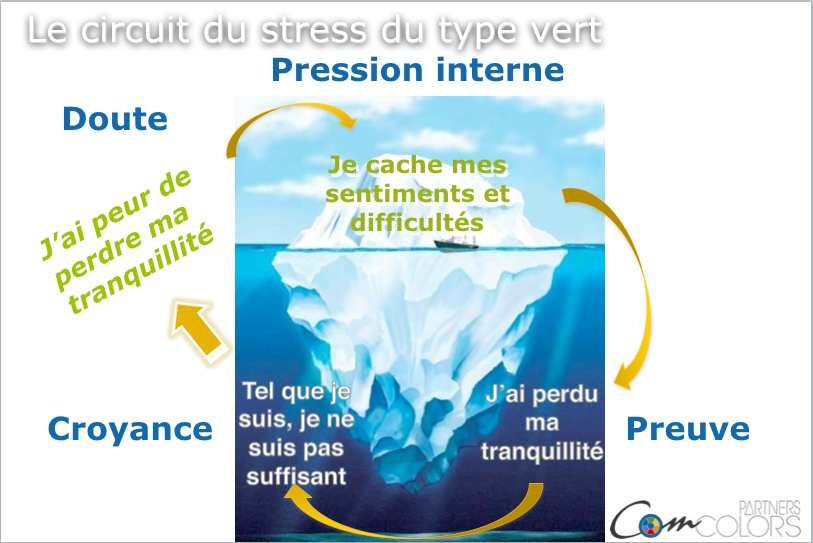Conditional behaviour of Green types

Green types are afraid of losing their tranquility.
Green types are hyper-sensitive, but they hide it because they are afraid that others will exploit it. They tend to surround themselves with an impenetrable shell so that no one can see anything from the outside. Furthermore, the more they feel things internally, the less they show them. They don’t show their feelings or problems in order to keep their calm. This is their conditional behaviour.
Example: It’s the old story of a group of boys on the playground who are teasing the girls by pulling their hair. One day, they choose a new student, a Green type. A boy pulls her hair and she doesn’t react. He tries again. Nothing. The boy calls out to his friends: “Hey, look at her, she’s not reacting!” The friends answer: “That’s no fun, let’s go tease the other girls!” and they run off to tease the girls who shout and defend themselves.
Relationships with others tend to feel invasive, and Green types try to reduce the impact, even if they desire to be in relationship! Green types also don’t like solitude. They need time to themselves that will be even more personally resourceful if they can go be with others afterwards.
It’s their high sensitivity that will prevent them from sharing bits of personal information that nourish relationships with others. For them, these little trivialities are useless.
For example:
“I woke up at 4 am.”
“Do you have insomnia?”
“No, the cat jumped on the bed.”
“Oh, you have a cat? Male or female? Does it go outside? What colour is it?” etc…
By learning to share these little bits of personal information every day (even if they seem stupid or trivial at first) Green types will learn to be in relationship without disturbing their tranquility, that is unchanging deep inside themselves.
To recharge their batteries, Green types need to take time for themselves… time to do nothing! Green types were told when they were little that this was not okay, so they learned to disguise this need. They do things like mess around in front of the computer, or sit in front of the TV – activities that don’t recharge their batteries. They wound up unlearning how to take care of themselves.
Green types start by thinking, and for this, they need time, not to organize their thoughts (like for Blue types), but to let go and let the idea pop into their heads. Like Red types, Green types are going to look for solutions, but they don’t want to have to revisit the same problem. They are looking for lasting solutions, solutions that stand the test of time.
In order for thinking to happen, the brain has to be at rest. This is why Green types often perform better in the morning after a good night’s sleep. For example, a lot of Green type writers wake up very early and work before lunch. Then they spend the afternoon going to the movies, meeting friends, going to art galleries, etc. for the rest of the day.
After lunch, Green types realize that they don’t have enough energy left for the pre-fontal cortex to work efficiently, so they will do menial tasks that don’t require a lot of thought. In that respect, Green types are the kings and queens of procrastination. This changes though, if they permit themselves to take time for themselves, and to take a little 10-20 minute nap in the early afternoon.
In order to launch into action, Green types need to visualize it first. They are going to visualize how they can best preserve their tranquility. During this process of visualization, they will do two things: they are going to remove obstacles and negative beliefs that prevent them from moving forward, and they are going to create the energy that is necessary for them to act. Then they will be able to act easily, without feeling like they have lost their tranquility!

Laisser un commentaire